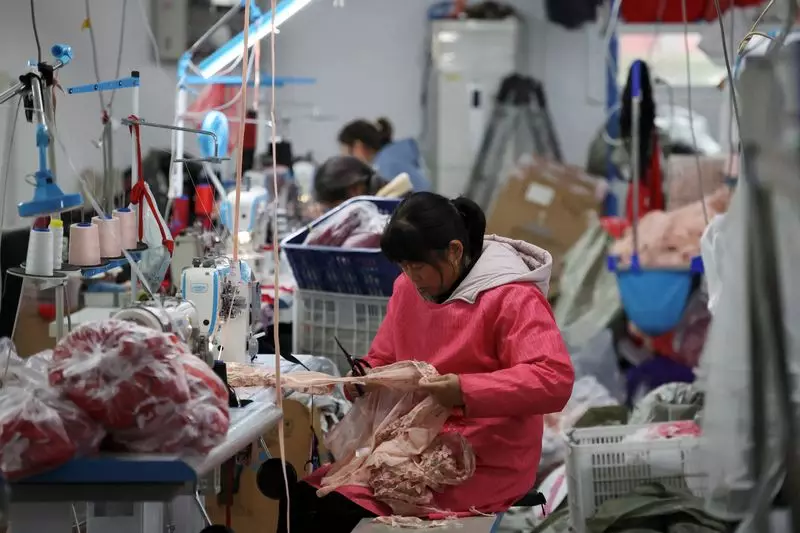China has recently reported troubling trends regarding the profits of industrial firms, with figures indicating a continued decline for the third consecutive year. Official statistics highlight that profits shrank by 3.3% in 2024, following a more severe 4.7% drop earlier in the year. This persistent decline starkly contrasts with a slight 2.3% decrease observed in 2023, raising significant concerns about the health of the nation’s industrial sector. Despite a GDP growth of 5%, which met governmental objectives, the underlying pressures on industrial profitability expose vulnerabilities within the broader Chinese economy.
A significant factor contributing to this grim outlook is the looming threat of tariffs from the newly inaugurated Trump administration in the United States. The expectation of potential tariffs has driven many factories to expedite exports, resulting in a temporary spike in December’s production output. This reaction illustrates an acute response to the uncertainty surrounding international trade relations. However, it also reveals the fragility of industrial firms’ reliance on export markets, highlighting the need for a more stable domestic demand to support sustained profitability.
Domestically, the Chinese economy is grappling with several pressing issues, such as a sluggish property market and dampened consumer demand. These internal challenges are compounded by decreasing factory-gate prices, which expanded into a second consecutive year. The implications on corporate profits are stark. Lower prices directly erode earnings, making it increasingly difficult for firms to maintain robust profit margins. Additionally, as firms struggle to align production levels with changing demand, business confidence continues to waver, stunting potential recovery.
In response to these crises, the Chinese government has enacted various stimulus measures, particularly in the latter half of the year. Initiatives like the expansion of consumer goods trade-in schemes aim to spark demand among consumers, yet the imbalanced economic growth suggests these measures may not be universally effective. While industrial output has shown resilience, retail sales have lagged, revealing a disconnect between production capabilities and consumer spending behavior.
Delving deeper into the composition of industrial profits, state-owned enterprises reported a decline of 4.6%, while foreign firms experienced a decrease of 1.7%. In contrast, private-sector companies saw a modest profit increase of 0.5%. This disparity points to systemic challenges faced by state-owned enterprises, which, despite government backing, struggle to adapt and thrive in a tumultuous economic landscape. The contrasting performance of private firms highlights their relative agility, suggesting that these companies may better navigate the evolving market dynamics.
The persistent decline of industrial profits in China underscores an urgent need for a strategic reassessment by policymakers. While government interventions may offer temporary relief, long-term solutions must address the underlying structural issues affecting both domestic and international demand. A multifaceted approach that enhances consumer confidence, stimulates sustainable growth, and mitigates external trade risks will be crucial for revitalizing China’s industrial landscape and ensuring economic resilience in the years to come.

